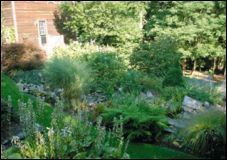Home Maintenance Ideas
- Periodically inspect the flush valve and overflow valve in all the toilets. A test is done by placing a few drops of food coloring into the tank and waiting approximately 25 minutes, without flushing the toilet. If you see the food coloring seep into the bowl, a toilet leak is confirmed. Sometimes a “shimmer” on the surface of the toilet bowl water will be evident and is another way to confirm that there is a leak.
The flush valve or “flapper” located in the bottom of the toilet tank will eventually wear out and require replacement. Upon replacing the flapper, be sure to have it properly seat against the contact at the bottom of the tank.
Check the overflow valve for the correct water level in the tank by removing the tank lid and verifying that the water level is approximately one inch below the overflow valve. Always make sure that the water in the tank is not running into the overflow tube. Normally, the arm of the ball float can be adjusted in order to bring the water level to the desired height. Check the positioning of the refill tube in relation to the overflow tube to ensure that there is no siphoning effect when the tank is refilling.
- During remodeling or toilet replacement consider the use of 1.8-gallon low flow toilets, which use approximately half the water per flush compared to the conventional types.
- Install aerators on water faucets and showerheads.
- Purchase water efficient washing machines and dishwashers and operate with only full loads.
- Routinely inspect water back-up sump pumps and repair dripping faucets.
- Inspect the furnace humidifier overflow valve for excessive water flow (if equipped).
Tips for Efficient Lawn and Landscape Irrigation
- To minimize evaporation, water lawns between 11:00pm and 5:00am during the hottest summer months. Utilize sprinkler rain shutoff devices to avoid unnecessary watering.
- Review sprinkler manufacturer specifications for gallons per minute usage in order to establish irrigation guidelines within your household budget for water consumption.
 Irrigate lawns for a maximum of 20 minutes per zone every other day during drought periods and much less for landscape beds. Frequent over watering can actually be detrimental to your lawn and landscapes.
Irrigate lawns for a maximum of 20 minutes per zone every other day during drought periods and much less for landscape beds. Frequent over watering can actually be detrimental to your lawn and landscapes.
- Be observant for breaks in underground lines or sprinkler heads that may contribute to a system leak.
- Mow your grass at a height of approximately three inches or higher and use a mulching blade so that the clippings act as a natural fertilizer and also hold in moisture.
- Use a larger part of your yard for landscape beds as opposed to lawn area. Landscape beds require far less irrigation than lawns.
- Use plenty of mulch in your landscape beds to hold in moisture and plant deep-rooted flowers and shrubs that are more drought resistant.
- Follow the mandatory odd-even date watering system. Residents with odd numbered addresses are asked to water outdoors only on the odd numbered calendar dates, while homeowners with even numbered addresses should limit outdoor water use to even numbered calendar dates. Use the last number in your address to determine if you have an even or odd numbered address.
- Follow the mandatory watering times. Residents who utilize the Novi Water System to water their lawn and/or landscaping and have an automatic, programmable underground irrigation system are asked to program their system to water between the hours of 11:00 pm and 5:00 am.
Conservation Tips
Conserve water to help control rates. By working together as a community, we can make simple changes in our water usage that will have an impact on the water rate charged by GLWA. Here are ways you can help.
Step One: Economize!
Look at your water habits developed over a lifetime. A lot of water goes down the drain because we have always thought of water as being plentiful and cheap. Typically, inside your house, bathroom facilities constitute nearly 75% of the water used. Become conscious of the amount of water you use, and look for ways to use less whenever you can.
Step Two: Repair Leaks!
A leak of just one drop per second wastes 2,400 gallons of water a year. Leaks are one of the great enemies of your water conservation program and they can't be taken lightly.
Step Three: Install Water Saving Devices
There are many devices you can buy and install fairly easily to reduce your water consumption. These include faucet aerators; flow regulators for shower heads; and displacement devices for toilets to reduce water consumption. Investing a little money, time and labor can have big paybacks to reduce water use.
Step Four: Reuse Water
Unused or slightly used water is often suitable for other purposes, even with no treatment or filtration. When maximum conservation is called for, make the most of any water before you let it go down the drain!

